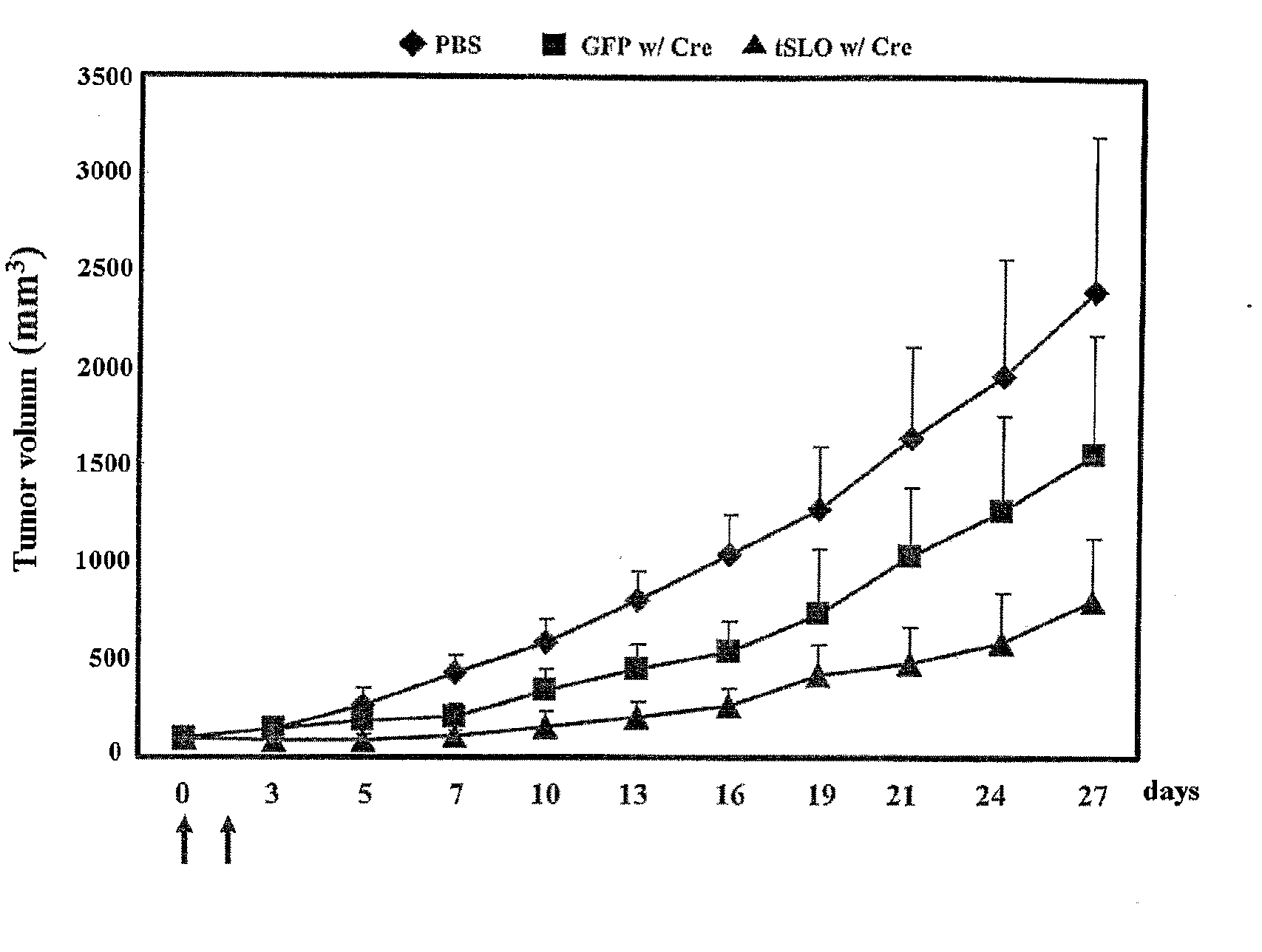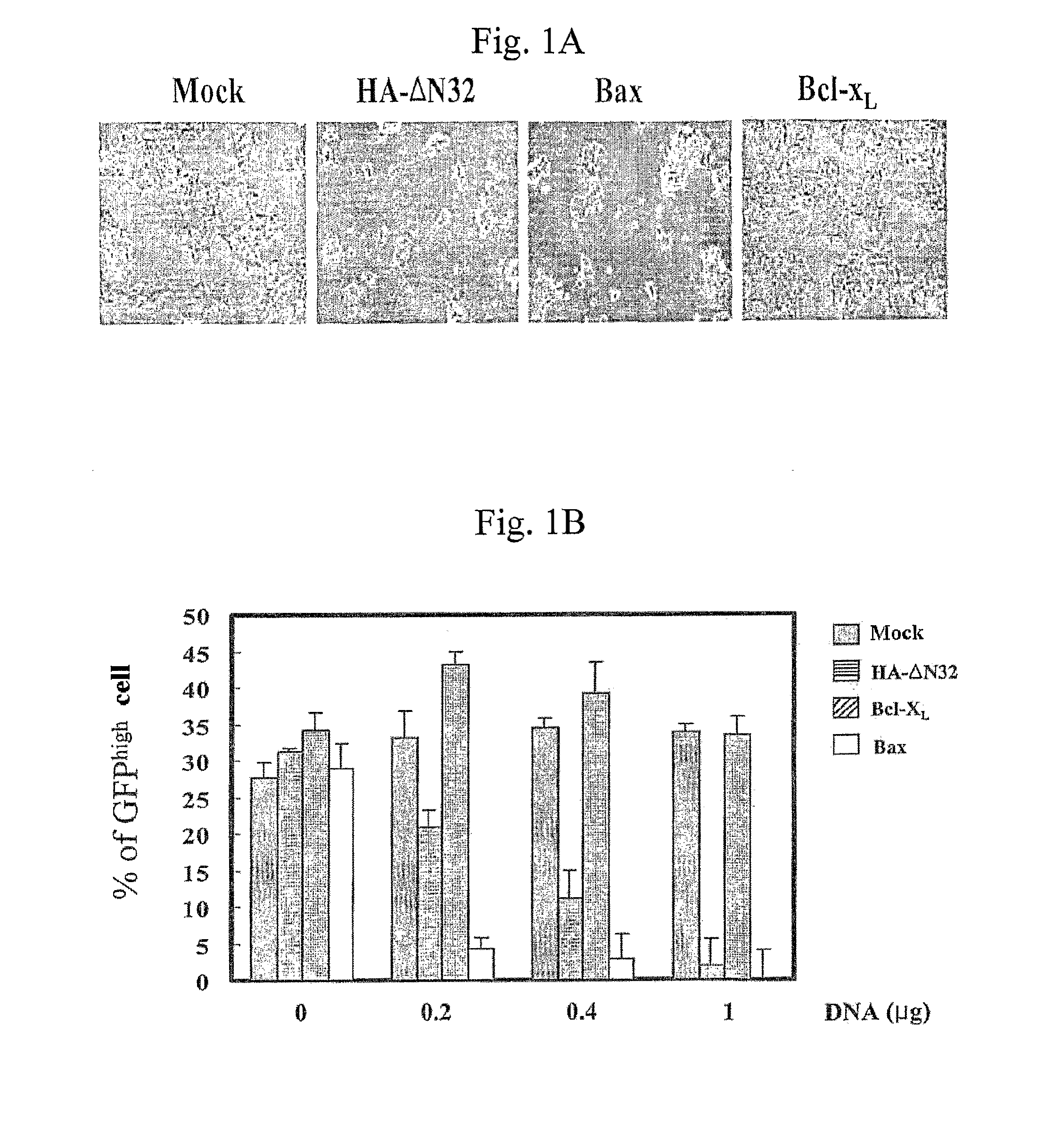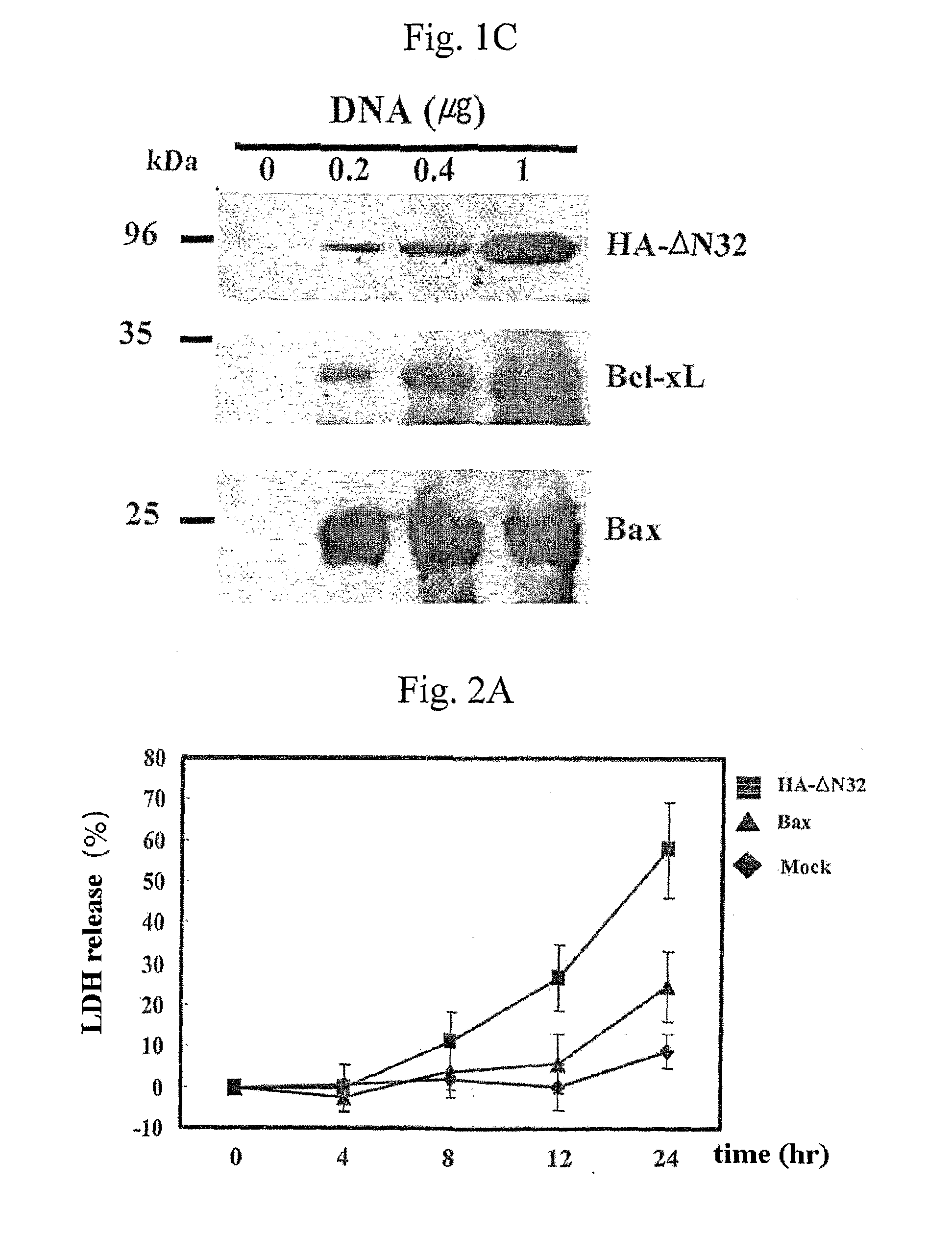Recombinant Adenovirus Expressing A Gene Encoding Streptolysin O Proetin and Anti-Cancer Composition Comprising Same
a technology of streptolysin o and adenovirus, which is applied in the field of recombinant adenovirus expressing a gene encoding streptolysin o (slo) protein and an anticancer composition comprising same, can solve the problems of neighboring cancer cells, inducing consecutive cell death, and intrinsic limitations as anti-cancer gene therapeutic reagents
- Summary
- Abstract
- Description
- Claims
- Application Information
AI Technical Summary
Benefits of technology
Problems solved by technology
Method used
Image
Examples
example 1
Assay of Cell-Killing Activity of SLO
Construction of SLO Transient Expression Plasmid
[0051]In order to examine whether a SLO expressed in a mammalian cell can induce cell death by showing the cytolytic activity identical to that of an active, natural SLO toxin, a transient expression plasmid system of the SLO was constructed.
[0052]To clone the SLO gene from a genomic DNA of Streptococcus pyogenes (ATCC 700294D), PCR was performed using ExTaq Polymerase (Takara bio, Japan) and a pair of primers (SEQ ID NOs: 1 and 2). The PCR condition was 30 cycles of 5 min at 94° C., 1 min at 58° C. and 1 min at 72° C. after initial denaturation for 10 min at 94° C., and final extension for 1 min at 72° C. The amplified DNA fragment was subcloned into EcoRI / XhoI restriction site of vector pcDNA3 (Invitrogen) to obtain vector pcDNA3-SLO, and the subcloned SLO fragment was analyzed by the dideoxynucleotide sequencing method.
[0053]As can be seen in Table 1, the sequence analysis revealed that the SLO ...
example 2
Assay of Plasma Membrane-Disrupting Effect of SLO
Monitoring Cell Permeability
[0063]SLO toxin secreted by bacteria creates large pores in the target cell plasma membrane, and thus, large molecules that normally cannot pass through the membrane are able to freely pass. The present inventors wanted to determine whether the observed cytotoxicity in ΔN32-transfected cells was the result of the increase of the membrane permeability of membrane pores generated by the expressed ΔN32. Thus, the increase of the membrane permeability of plasma membrane was monitored by detecting the level of LDH (lactate dehydrogenase) release from the cytosol of transfected cells into the culture medium. LDH has a molecular weight of ˜125 kDa, and cannot freely transverse the plasma membrane, thus, the LDH release assay has been widely used to measure the level of cell lysis caused by membrane attack by perforin, complement system, or pore-forming toxins.
[0064]Cells transfected with each expression vector as...
example 3
Biochemical Assay of SLO-Induced Cell Death
Caspase Activity Assay
[0071]Caspases are proteolytic enzymes that are activated during various forms of cell death. To test the possibility that caspases are involved in ΔN32-induced cell death, the present inventors measured cellular caspase activities using the caspase-3-specific peptide substrate DEVD-pNA (Calbiochem, USA).
[0072]Specifically, 293T cells were transfected with 200, 400, 1,000 ng of each expression construct of Bax, GFP-caspase-8 and HA-ΔN32, and mock vector, and incubated for 24 hours. The GFP-caspase-8 construct was kindly provided by Dr. Miyashita (National Research Institute for Child Health and Development, Japan). Pan-caspase inhibitor, Boc-D was added to the culture at a final concentration of 100 μM. The cultured monolayer cells were harvested and then centrifuged at 450×g for 10 min at 4° C. After removing the supernatant, cell pellets were resuspended in 100 μl of cell lysis buffer (50 mM HEPES (pH 7.5), 1 mM DTT...
PUM
| Property | Measurement | Unit |
|---|---|---|
| Length | aaaaa | aaaaa |
| Length | aaaaa | aaaaa |
| Length | aaaaa | aaaaa |
Abstract
Description
Claims
Application Information
 Login to View More
Login to View More - R&D
- Intellectual Property
- Life Sciences
- Materials
- Tech Scout
- Unparalleled Data Quality
- Higher Quality Content
- 60% Fewer Hallucinations
Browse by: Latest US Patents, China's latest patents, Technical Efficacy Thesaurus, Application Domain, Technology Topic, Popular Technical Reports.
© 2025 PatSnap. All rights reserved.Legal|Privacy policy|Modern Slavery Act Transparency Statement|Sitemap|About US| Contact US: help@patsnap.com



